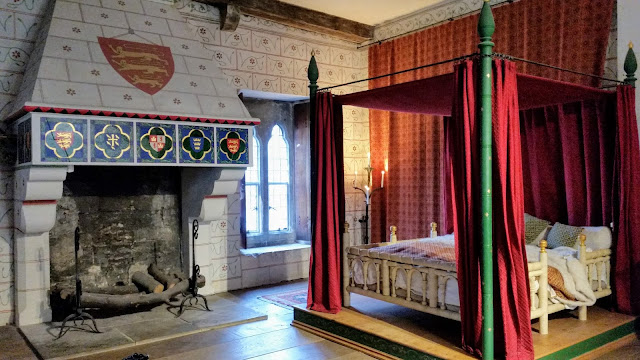 |
| The bedchamber of King Edward I. |
The first part of the Tower that I visited, on entering from the Byward Tower, was the Medieval Palace. It is remarkably well preserved and with actors wandering through the rooms, dressed in medieval garb, you get a real sense of life in the 1200s.
Some of the walls, and parts of the flooring, have been left in a bit of disrepair, to show how the palace was constructed.
Brief History
King Henry III had the Wakefield Tower constructed, which would become the King's lodgings, and then had the Lanthorn Tower built, to act as the Queen's lodgings. The moat was extended and new curtain walls were also added. The Byward Tower, with a drawbridge, was built and became the main entrance to the Tower complex.
Between 1238-1272 ten more towers were added; The Middle, Salt, Martin, Deveraux, Flint, Brick, Constable, Broad Arrow, Bowyer and Garden. The latter would later be renamed the Bloody Tower.
Edward I had St Thomas's Tower built to act as his royal lodgings, adding a river entrance, known as Traitor's Gate. The Well, Beauchamp and Develin Towers were soon added, too.
St Tomas's Tower, the Wakefield Tower and the Lanthorn Tower are what make up what is now known as the Medieval Palace.
No comments:
Post a Comment